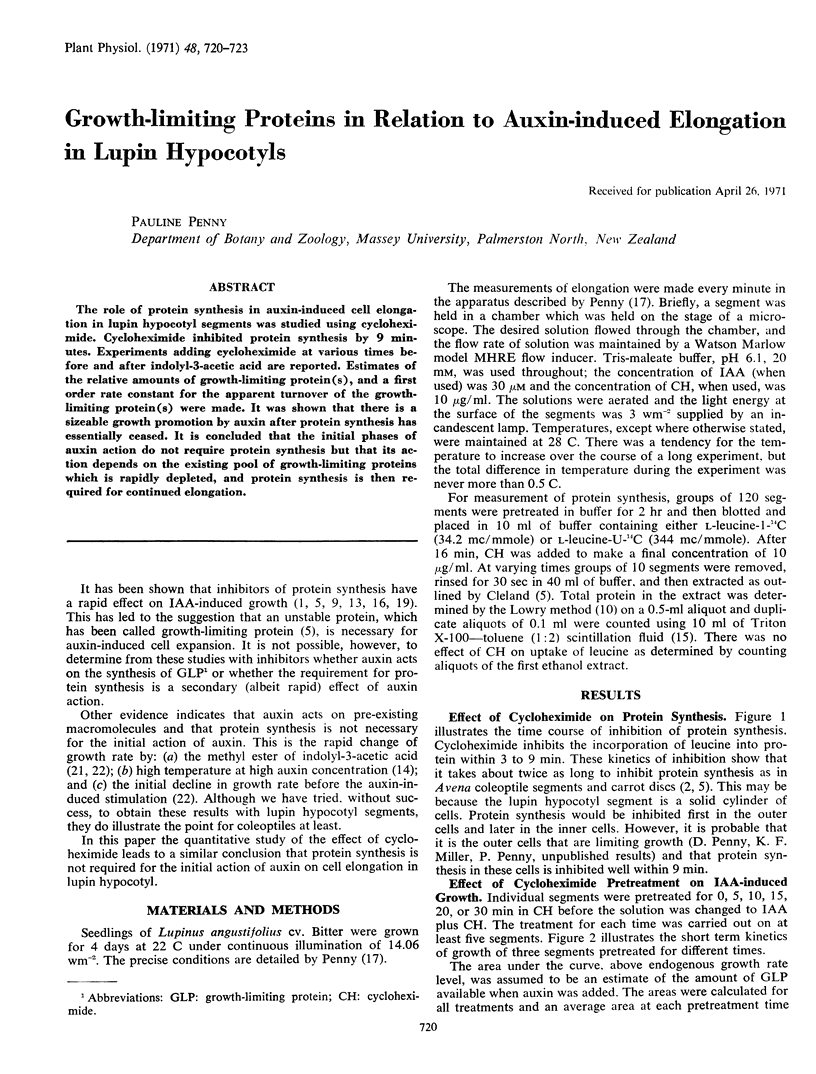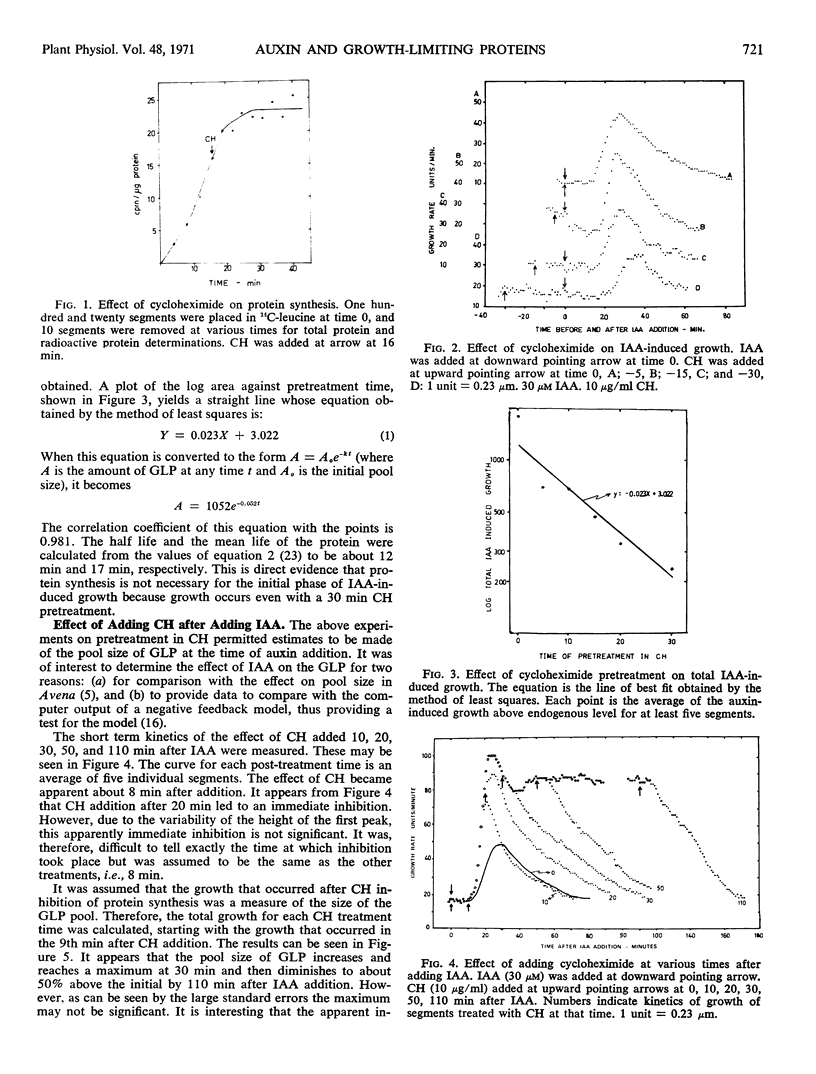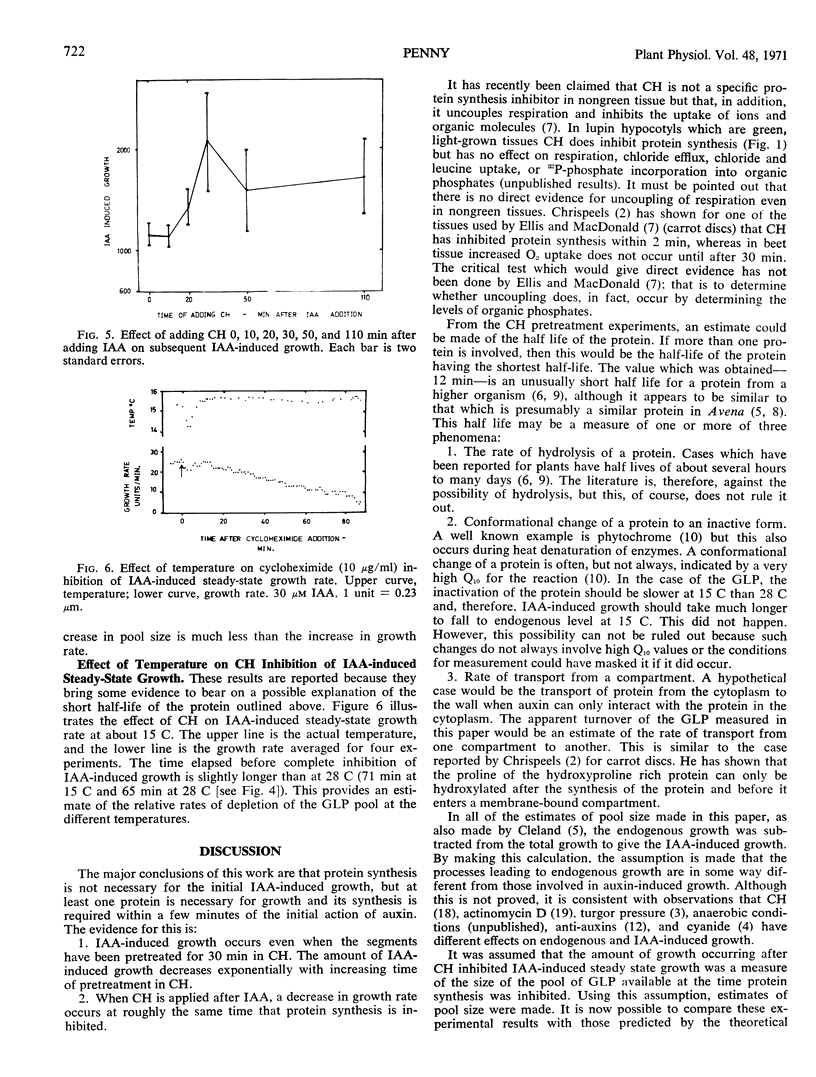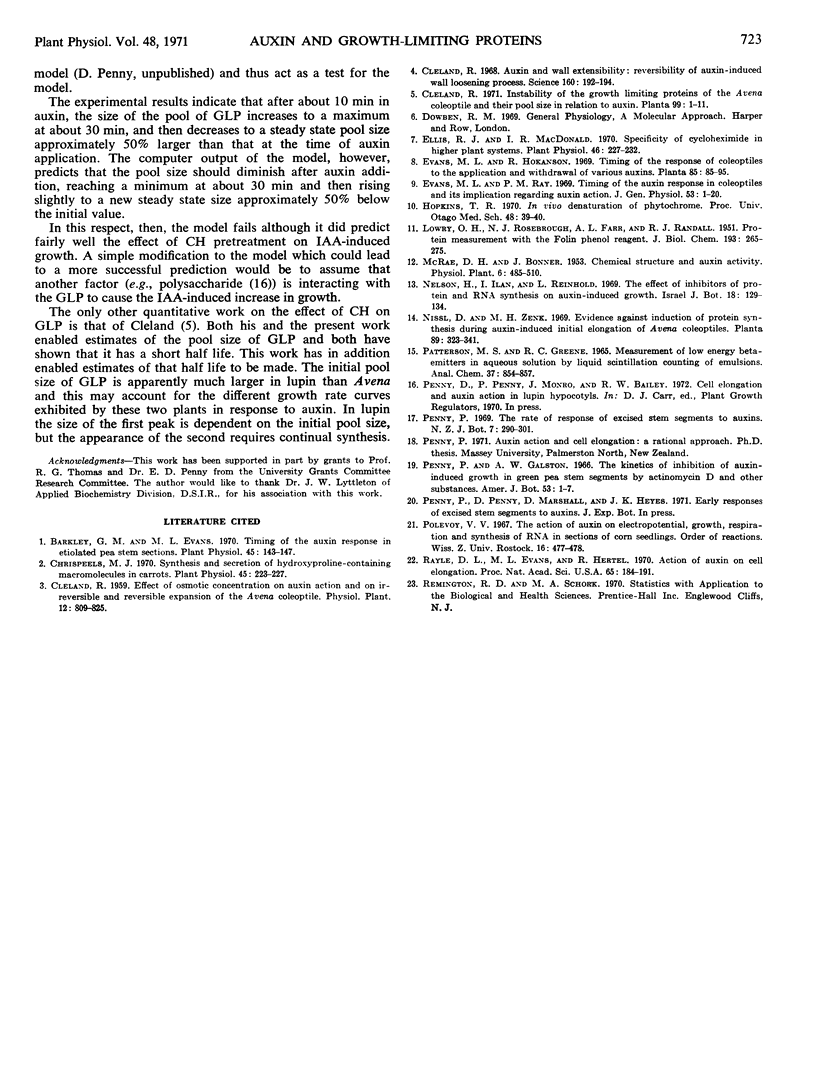Abstract
The role of protein synthesis in auxin-induced cell elongation in lupin hypocotyl segments was studied using cycloheximide. Cycloheximide inhibited protein synthesis by 9 minutes. Experiments adding cycloheximide at various times before and after indolyl-3-acetic acid are reported. Estimates of the relative amounts of growth-limiting protein(s), and a first order rate constant for the apparent turnover of the growth-limiting protein(s) were made. It was shown that there is a sizeable growth promotion by auxin after protein synthesis has essentially ceased. It is concluded that the initial phases of auxin action do not require protein synthesis but that its action depends on the existing pool of growth-limiting proteins which is rapidly depleted, and protein synthesis is then required for continued elongation.
Full text
PDF



Selected References
These references are in PubMed. This may not be the complete list of references from this article.
- Barkley G. M., Evans M. L. Timing of the auxin response in etiolated pea stem sections. Plant Physiol. 1970 Feb;45(2):143–147. doi: 10.1104/pp.45.2.143. [DOI] [PMC free article] [PubMed] [Google Scholar]
- Chrispeels M. J. Synthesis and Secretion of Hydroxyproline-containing Macromolecules in Carrots: II. In vivo Conversion of Peptidyl Proline to Peptidyl Hydroxyproline. Plant Physiol. 1970 Feb;45(2):223–227. doi: 10.1104/pp.45.2.223. [DOI] [PMC free article] [PubMed] [Google Scholar]
- Cleland R. Auxin and wall extensibility: reversibility of auxin-induced wall-loosening process. Science. 1968 Apr 12;160(3824):192–194. doi: 10.1126/science.160.3824.192. [DOI] [PubMed] [Google Scholar]
- Ellis R. J., Macdonald I. R. Specificity of cycloheximide in higher plant systems. Plant Physiol. 1970 Aug;46(2):227–232. doi: 10.1104/pp.46.2.227. [DOI] [PMC free article] [PubMed] [Google Scholar]
- Evans M. L., Ray P. M. Timing of the auxin response in coleoptiles and its implications regarding auxin action. J Gen Physiol. 1969 Jan;53(1):1–20. doi: 10.1085/jgp.53.1.1. [DOI] [PMC free article] [PubMed] [Google Scholar]
- LOWRY O. H., ROSEBROUGH N. J., FARR A. L., RANDALL R. J. Protein measurement with the Folin phenol reagent. J Biol Chem. 1951 Nov;193(1):265–275. [PubMed] [Google Scholar]
- PATTERSON M. S., GREENE R. C. MEASUREMENT OF LOW ENERGY BETA-EMITTERS IN AQUEOUS SOLUTION BY LIQUID SCINTILLATION COUNTING OF EMULSIONS. Anal Chem. 1965 Jun;37:854–857. doi: 10.1021/ac60226a017. [DOI] [PubMed] [Google Scholar]
- Penny P., Galston A. W. The kinetics of inhibition of auxin-induced growth in green pea stem segments by actinomycin D and other substances. Am J Bot. 1966 Jan;53(1):1–7. [PubMed] [Google Scholar]
- Rayle D. L., Evans M. L., Hertel R. Action of auxin on cell elongation. Proc Natl Acad Sci U S A. 1970 Jan;65(1):184–191. doi: 10.1073/pnas.65.1.184. [DOI] [PMC free article] [PubMed] [Google Scholar]


